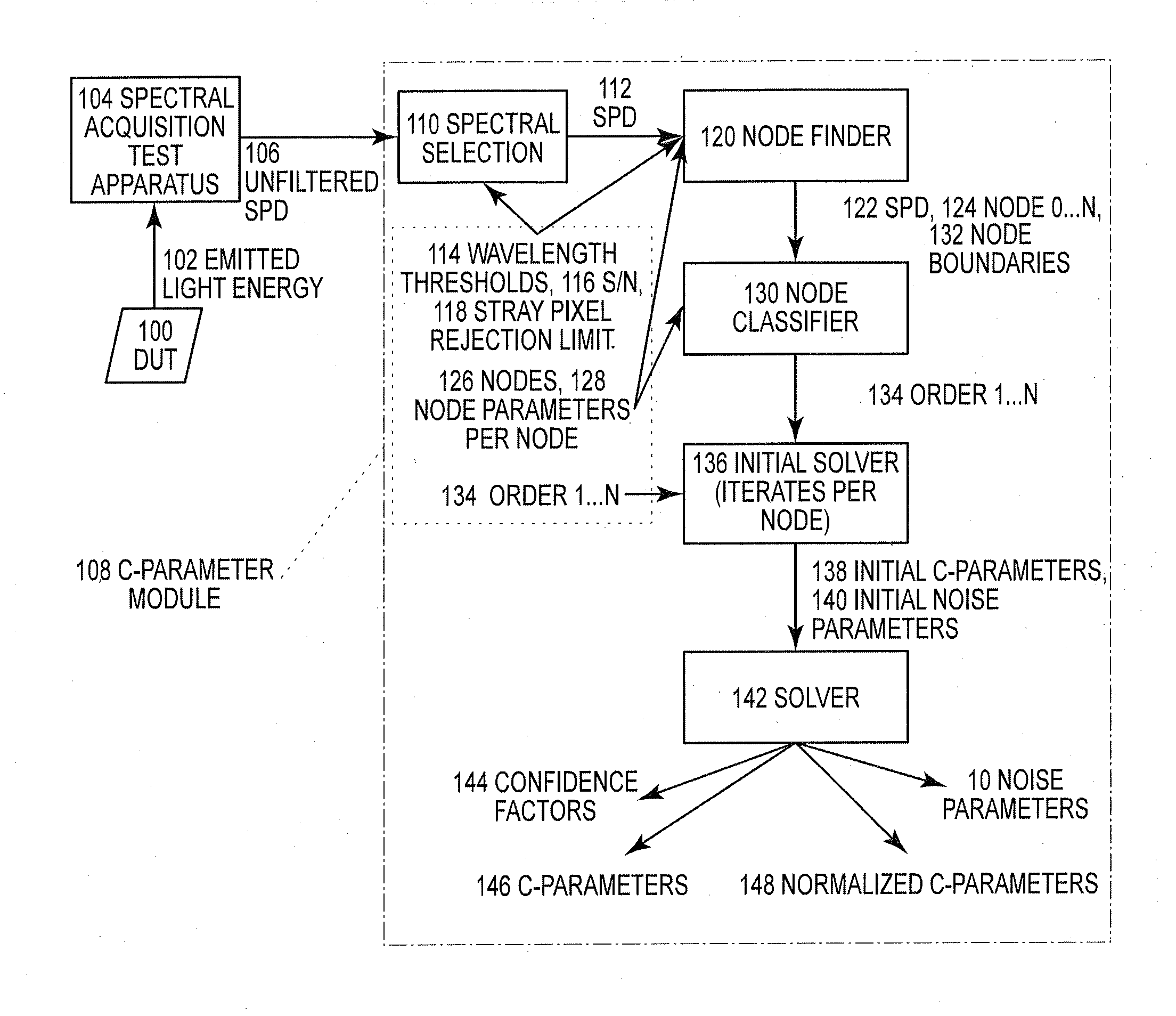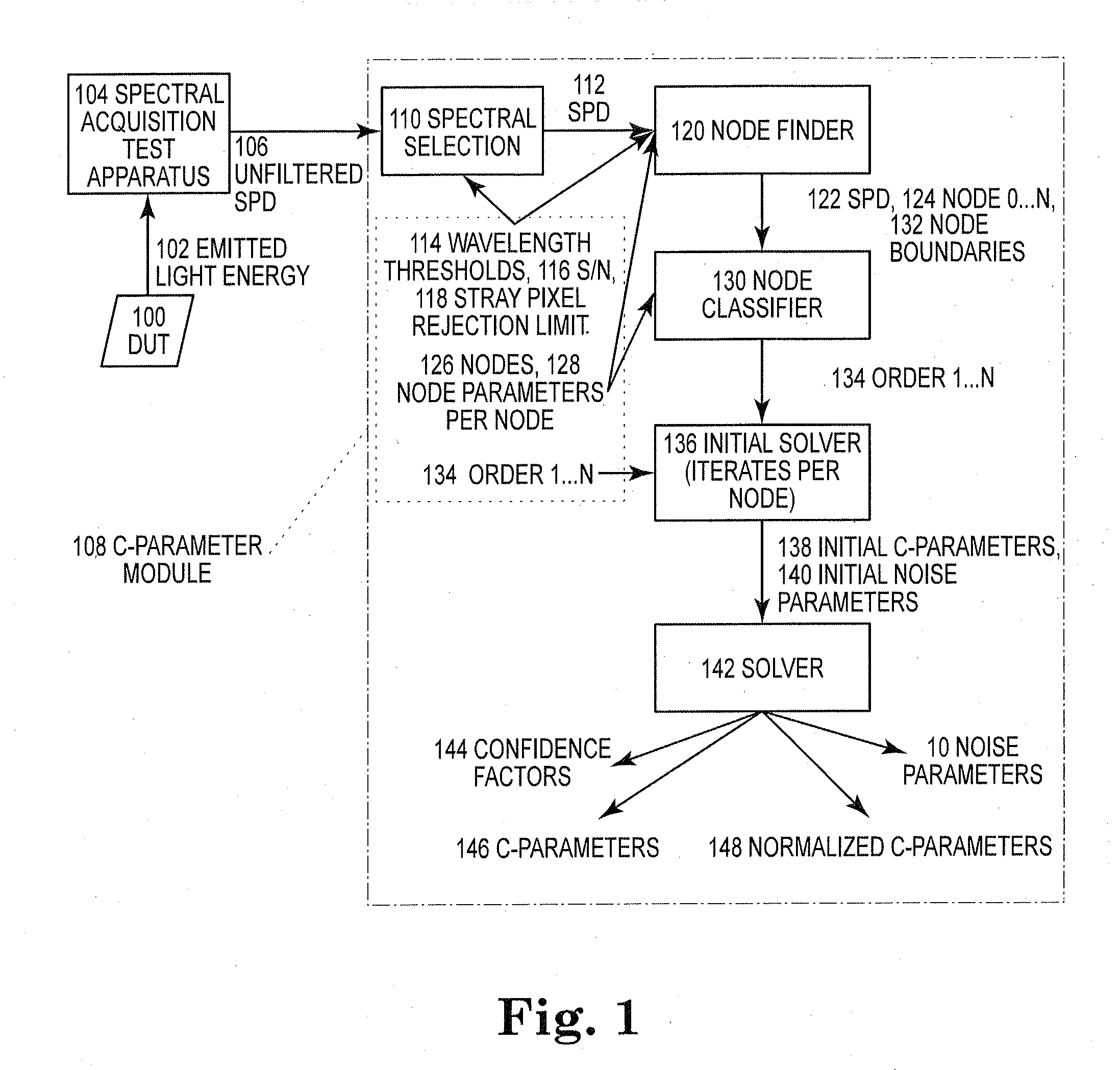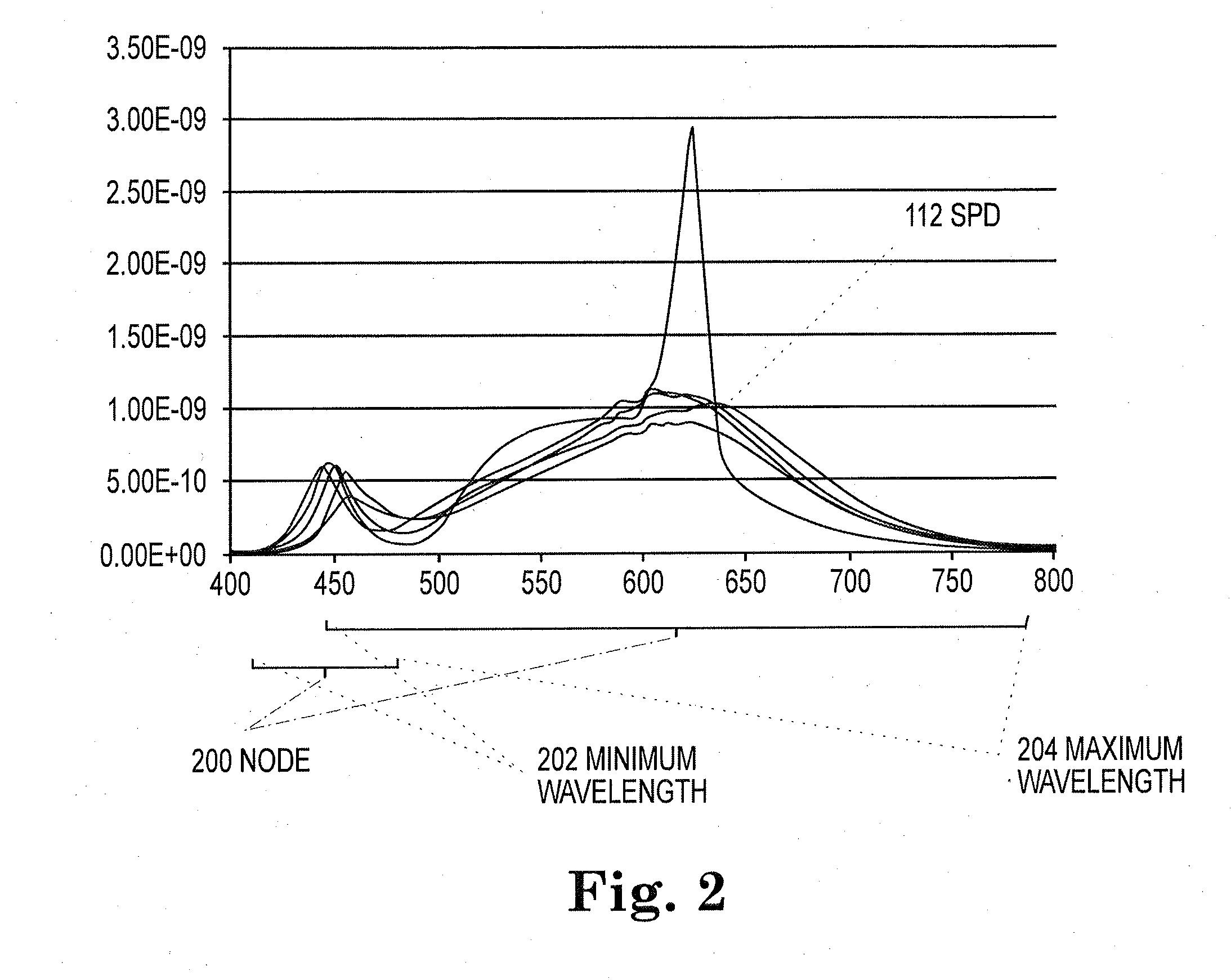System and Method of Quantifying Color and Intensity of Light Sources
a light source and color intensity technology, applied in the field of system and method of quantifying color and intensity of light source, can solve the problems of inability of human observer to discern a certain mixture of different colored light sources, often inaccurate reproduction, and inability to accurately reproduce conditions, etc., to improve the ability to quantify and characterize optical output power, improve accuracy and efficiency, and improve the effect of precision and efficiency
- Summary
- Abstract
- Description
- Claims
- Application Information
AI Technical Summary
Benefits of technology
Problems solved by technology
Method used
Image
Examples
Embodiment Construction
[0018]FIG. 1 illustrates one embodiment of the present invention in which a SSL source, such as a HBLED device under test 100 (hereinafter referring to “DUT 100”), emits light energy 102 into a spectral acquisition test apparatus 104 which captures the emitted light energy as a spectrum which describes power or energy as a function of wavelength. For the purposes of HBLED test and measurement this spectrum is an unfiltered spectral power distribution (SPD) 106. The unfiltered SPD 106 is input to the C-Parameter module 108. The C-Parameter module 108 characterizes the energy or power emitted by the DUT 100 as a function of wavelength in terms of a linear superposition of functions. The specific form of the function used in the series is determined by the physics of the DUT 100. In the instance of the HBLED application, the physical mechanisms (hole / electron radiative recombination in a band-gap compound semiconductor) that cause optical emissions are describable by a function known a...
PUM
 Login to View More
Login to View More Abstract
Description
Claims
Application Information
 Login to View More
Login to View More - R&D
- Intellectual Property
- Life Sciences
- Materials
- Tech Scout
- Unparalleled Data Quality
- Higher Quality Content
- 60% Fewer Hallucinations
Browse by: Latest US Patents, China's latest patents, Technical Efficacy Thesaurus, Application Domain, Technology Topic, Popular Technical Reports.
© 2025 PatSnap. All rights reserved.Legal|Privacy policy|Modern Slavery Act Transparency Statement|Sitemap|About US| Contact US: help@patsnap.com



